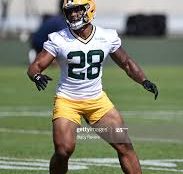Note: This is the second in a series of six articles on how to approach the quarterback position in a 2QB or Superflex league. The overall strategy article appears here.
This approach to roster construction in 2QB and Superflex leagues is simple, powerful, and difficult to execute: Get multiple stud QBs. Having two (or three) elite QBs gives you the biggest advantages at the highest-scoring position.
Let’s use a SWOT analysis to appreciate the upside and challenges of this approach.
Strengths:
- Dominate at the most valuable, highest-scoring, and most scarce position. Simple supply and demand economics shows that QBs in an SF and 2QB league is the most scarce commodity. Most teams have two viable RBs and three viable WRs — more than enough to fill a starting line-up with flex spots — and many have at least one viable TE. The number of quarterbacks that start each week is finite: 32. And that doesn’t even take into consideration bye weeks. By having multiple stud QBs, you have a twofold advantage. You get more points and highest-scoring position while simultaneously depleting resources for your competitors at the scarcest position.
- Longevity. In a dynasty league, having elite players who are likely to remain in their top tier for a long time is gold. Given the rules over the past few years in the NFL looking to protect all players — especially quarterbacks — good quarterbacks are now playing longer than ever and longer than any other player on average at the other offensive skill positions. Lock up a few elite QBs, and you are set in fantasy for a decade.
Weaknesses:
- Likely no studs elsewhere. To accomplish this goal of multiple stud QBs in a draft, you’ll be using most if not all of your first picks. In auction, you’ll be budgeting 50% or more to this position. That limits the number of studs that you can have elsewhere.
- Hard to trade. You’ll need at least three stud QBs for this strategy to work. After all, you need to be covered for bye weeks, injuries, and anomaly off-seasons. That means that you won’t be able to trade from your position of strength — quarterback — to fill other roster needs (unless you acquire a fourth or fifth compelling QB).
Opportunities:
- Scarcity for your opponents. Remember the supply and demand comment from above? Odds are that at least one team — and maybe more! — might not be able to use a viable QB in their superflex or 2nd quarterback slot each week. That gives you an incomparable advantage over them!
- Flexibility to compete or rebuild. Given the longevity of quarterbacks, you have flexibility to rebuild at any time. With elite QBs, you can keep them through your rebuild and not miss out on a small window of productivity, like with running backs. Then, when you are ready to win immediately, you’ll be all set at the most important position — even if it’s a few years in the making.
- Value players will fall to you. When other teams are scrambling for the worst of the starting quarterbacks in the league or for some of the most promising back-ups — using valuable draft capital or auction dollars to acquire these lesser players — you can scoop up value at other positions. This might not give you studs everywhere. But, it will round up your lineup with underappreciated and over-performing players.
Threats:
- You need to hit elsewhere. If you have a couple of top players at each position, then you can afford to have one struggle. With the multiple stud QB approach, you won’t get studs elsewhere unless you hit on a couple of players later in the draft, via the waiver wire, or via trade.
- Use of premium capital. There’s no way around it: you need to use all premium capital on quarterbacks. Is your number one ranked WR sitting there at the end of the first round? Pass (or try to trade back). Is a top-five running back available in the auction for 80% of what you consider to be his value? Well, someone else will get the deal. You can’t maximize your draft capital across your team; it’s all-in on the QBs.
The multiple stud QBs approach can be unbeatable over the short-term and the long-term — if you are able somehow to round out your roster. It also has a built-in floor each season and provides you the luxury of letting a young team develop and grow. Still, you might find yourself limited in terms of your roster flexibility and trading. If you want to have the best chance to dominate and can accept some risk at struggling positions elsewhere, then the multiple stud QBs approach is perfect for you!
Targets: Rodgers, Wilson, Brady
Who might make the jump: Winston
Next week: The Value QB approach



